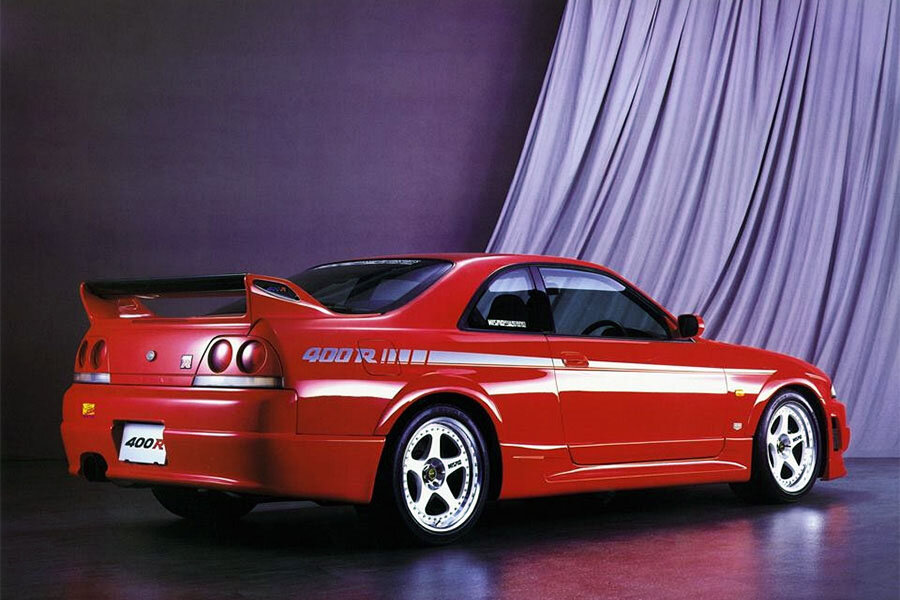Guide: Nissan R33 Skyline GT-R Nismo 400R - a Historical & Technical Appraisal
/BACKGROUND
In 1996, Nissan unveiled a limited production GT-R equipped with a comprehensive list of performance upgrades.
Developed by Nissan Motorsport (Nismo), the 400R was created for those customers who wanted a GT-R on steroids.
The car’s 400R moniker reflected a 400bhp power output.
At its heart was a new engine that had been enlarged by over 200cc.
This tricked out 2.8-litre engine had originally appeared in the GT1-class Skylines that raced at the Le Mans 24 Hours in 1996.
The plan was to build 100 400Rs, but less than half that amount were ever sold. This meant Nissan probably didn’t see a profit on the model as it included many expensively developed enhancements.
ENGINE / TRANSMISSION
Chief among these was the special RB-X GT2 version of the original RB26DETT engine.
Developed for motor sport use, the RB-X GT2 unit was a collaboration between Nismo and another of Nissan’s competition partners, REINIK.
Stroke was taken out to 77.7mm (from 73.7mm) and the reinforced cylinder block was bored to 87mm (from 86mm). This gave an overall displacement of 2771cc which represented a 203cc gain.
The pistons, crankshaft and connecting rods were all forged, the ports were polished, high-lift camshafts were installed and the cylinder heads were optimised.
Intake manifolds were revised and the exhaust manifolds (from the special low pressure cats back) were titanium to match the rest of the exhaust system.
Turbochargers from the N1 racing GT-R were fitted. Boost pressure was increased from 0.85 bar to 1.1 bar. This meant, despite a standard 8.5:1 compression ratio, the RB-X motor enjoyed an enormous hike in output.
Peak power was now 400bhp at 6800rpm and the torque rating surged to 346lb-ft at 4400rpm. By contrast, official figures for the standard car were 276bhp and 271lb-ft (peak output was developed at the same engine speed in both derivatives).
Other special RB-X equipment included a new engine management system and high flow air filter. The oil cooler and intercooler were also upgraded.
The five-speed transmission was reinforced with a carbonfibre driveshaft and a beefier twin-plate clutch. Each 400R used the ATTESA E-TS Pro four-wheel drive system with Active Limited-Slip differential found in the V-spec GT-R.
CHASSIS
Nissan’s R33 steel unibody chassis was enhanced with titanium strut braces and reinforced bushes. The independent multi-link suspension now came with special Bilstein dampers and more aggressive Nismo Type D springs.
Ride height was 30mm lower than the standard car.
Thanks to Brembo ventilated discs (324mm front and 300mm rear), the standard GT-R was already blessed with considerable stopping power. Nismo further uprated the 400R with their own Type 2 brake pads and a brake master cylinder stopper designed to reduce any fore/aft play.
Handsome three-piece Nismo LM GT1 forged alloy wheels were shod with Bridgestone RE 710 tyres. These white-centred wheels had an 18-inch diameter and 10-inch width (compared to 9 x 17-inches for the standard GT-R). Track was 50mm wider at either end as a result.
BODYWORK
To reflect the 400R’s comprehensive list of mechanical upgrades, it was given an aggressive new body kit.
The front bumper housed intakes for the brakes, oil cooler and intercooler plus enormous cooling vents down each side.
Wheelarch extensions were required to cover the three-piece rims.
A carbonfibre LM GT1-style hood contained a huge vent to expel air passing through the intercooler and radiator.
The side skirts and rear bumper were also new and a second element was added to the rear spoiler.
HID lights were fitted as standard.
400R badges replaced the standard GT-R items at the front, rear and on the rear wing endplates.
Additionally, each car was emblazoned with a full length 400R stripe along each flank. The stripes were finished in black or silver depending on body colour.
All this extra equipment gave the new car a much more purposeful appearance than the standard GT-R.
INTERIOR
Inside, the 400R came with Nismo-branded Type R reclining bucket seats, a titanium shift knob and a small diameter three-spoke non-airbag steering wheel complete with 400R horn push.
The main instrument binnacle housed a new 320kph speedometer and 11,000rpm tachometer, both of which were branded with Nismo 400R logos. Special turbo boost, oil pressure and torque split indicator gauges were located in the central console.
Standard equipment included air-conditioning, a stereo, electric windows, electric mirrors and power-assisted steering.
WEIGHT / PERFORMANCE
Whereas the regular GT-R was limited to 155mph, the 400R had no such restriction and topped out at 186mph.
The 0-62mph time dropped from 5.5 seconds to four seconds dead.
Weight was the same as a V-spec GT-R at 1540kg.
PRODUCTION
Although Nismo originally planned to produce 100 examples, only were 44 made before production ended in 1998. All were right-hand drive.
Aside from the unique GT-R LM built to homologate a GT1 class racer, the 400R went down as the ultimate R33.
Text copyright: Supercar Nostalgia
Photo copyright: Nissan - https://www.nissan-global.com

































